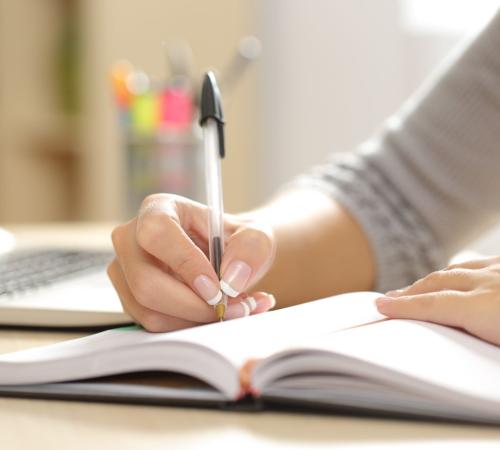
Businesses emerging from the pandemic: how can you begin to recover?

However your business has been affected by the Covid-19 pandemic, you’re likely to be in decision mode right now. You can't change the situation, but you can choose how you respond.
In terms of a response, I'm going to focus on two critical questions:
- Does my business need funding and if so, do I choose a CBILS loan, invoice finance, e-commerce finance, trade finance or another option?
- How can I cut costs (unlock savings) any more than I have done already?
Funding your business – some options to consider
As a funding marketplace, Swoop has an unusually good vantage point for observing changes in both demand and supply. We sit between finance providers (banks, invoice finance providers, investors, etc) and businesses looking for funding and savings solutions in order to grow.
While we're continuing to help businesses access government-backed funding (external link) such as the Coronavirus Business Interruption Loan Scheme (CBILS), we've also seen a broad range of providers turn the funding tap on again. I'll focus here on the eight options that are currently in greatest demand from Swoop customers:
Invoice finance
If you’ve issued invoices to your customers and these haven’t yet been paid, you can use invoice finance to unlock this money early.
With all types of invoice finance (external link), a lender will advance you most of the value of an invoice (or invoices) immediately – so you’ll get paid faster for completed work.
Asset-based lending
It's worth exploring asset-based lending (external link) (ABL) if your cash flow is tight. Lenders in our network have reported a large increase in the number of businesses buying new equipment using ABL. Site visits (for valuations) are now happening again, so we've seen an increase in take-up – particularly by companies with good credit ratings.
Trade finance loan
If you're concerned about securing your supply chain, you might benefit from some sort of trade finance. For example, if you’re dealing with international buyers and suppliers, a trade finance loan (external link) can give you cash to buy inventory or stock from a supplier in order to fulfil an order.
Business cash advance
The e-commerce sector has particularly benefited from business cash advances (external link). We've all watched as businesses have taken their offerings online in response to brick-and-mortar closures and social distancing measures. And we've seen how for some existing e-commerce businesses the pandemic has been a business opportunity.
From the supply perspective, we've seen an increase in liquidity from business cash advance lenders – they have diversified their product ranges and are now lending to a broader set of sectors than they were pre-Covid.
Working capital loan
Over the past few months, we’ve seen demand in particular for unsecured (external link) loans in the £100,000 to £250,000 bracket – either CBILS or standard ones. You'll need a good credit rating and you might be asked for a personal guarantee.
Revolving credit line
Even though you might not need it right now, a line of credit (external link) is an easy way to delay cash flow problems and give yourself a bit of headroom. Think of it as an insurance policy. You might be able to use your accounts receivable or your inventory as collateral. It's a good option if you don’t want to commit to a loan.
Re-bridging loan
If you’re looking to refinance an existing bridging loan (external link) at a better interest rate, or if your existing bridging loan is coming to the end of its term, you might need to arrange a loan extension (i.e. a re-bridging loan). The alternative is moving your loan to an alternative lender.
R&D tax credit loan
There are a growing number of finance providers who can advance funds to you against your R&D tax credit claim. If you haven’t ever claimed R&D tax relief (external link) from HMRC, you might find you're eligible, especially if you’re planning to invest in technology and IT systems, new e-commerce websites or other new software. These all come under HMRC’s rather broad definition of “an advance in science or technology”. And you can also claim on unsuccessful projects – or if your business is running at a loss.
The main benefit of an R&D tax credit loan (external link) is that you can usually access funds within a week, whereas HMRC might take months (or even a year) to pay your tax credit.
Once you have selected the right funding product, you'll also need to be aware of the requirements a finance provider might have for a particular product. And you should prepare all documentation (e.g. your most recent 6 months' bank statements, a 12-month cash flow forecast and up-to-date management accounts) ahead of time, so you aren't held up at the point of application. Being application ready is vitally important if you are looking to secure funding in a timely manner.
Making savings on your everyday costs
The good news is that you can nearly always make savings in the very short term (i.e. today) across your cost base, e.g. in banking, foreign exchange, utilities and insurance.
Here are three ideas:
- Open another bank account (multi-banking)
You might consider opening an additional account and moving the most expensive transactions to it. Some banks have, for example, specialist benefits for businesses that are more digital. - Change your international payments (foreign exchange) provider
If you do business overseas that involves sending money to (or receiving money from) foreign bank accounts, consider switching from your main bank to a different provider. Some offer different exchange rates and transfer fees, and in some cases the bank receiving money charges fees. - Change your energy supplier
We know that some energy suppliers still have excess supply after the mild winter, so now is a good time for businesses to review providers.
Revisiting the list of questions at the beginning of this blog, and the many associated decisions, I'll end with some softer guidance. Whether you're considering your finance options, a change in business strategy, ways to cut your everyday costs, or the scale of your redundancies, I'd urge you to research as much as you can, talk to people in similar positions (even, dare I say it, competitors) and make your decisions as collaborative as possible.
While it might be too soon to know the long-term effects of Covid-19 on your business, there's no doubt that the decisions you make now will affect your performance during the recovery and beyond.
If you’re interested to learn more about any of the products you’ve read about here, including government-backed support for UK businesses, please register (external link) with Swoop and one of our advisors will be in touch.
Swoop Funding is delighted to be working with Hiscox, offering the Hiscox community simple and fast access to funding and saving solutions and enabling Swoop customers to discover Hiscox as an insurance option for their business.
This article is provided for general information purposes only and should not be relied upon as professional advice.
Disclaimer:
At Hiscox, we want to help your small business thrive. Our blog has many articles you may find relevant and useful as your business grows. But these articles aren’t professional advice. So, to find out more on a subject we cover here, please seek professional assistance.






